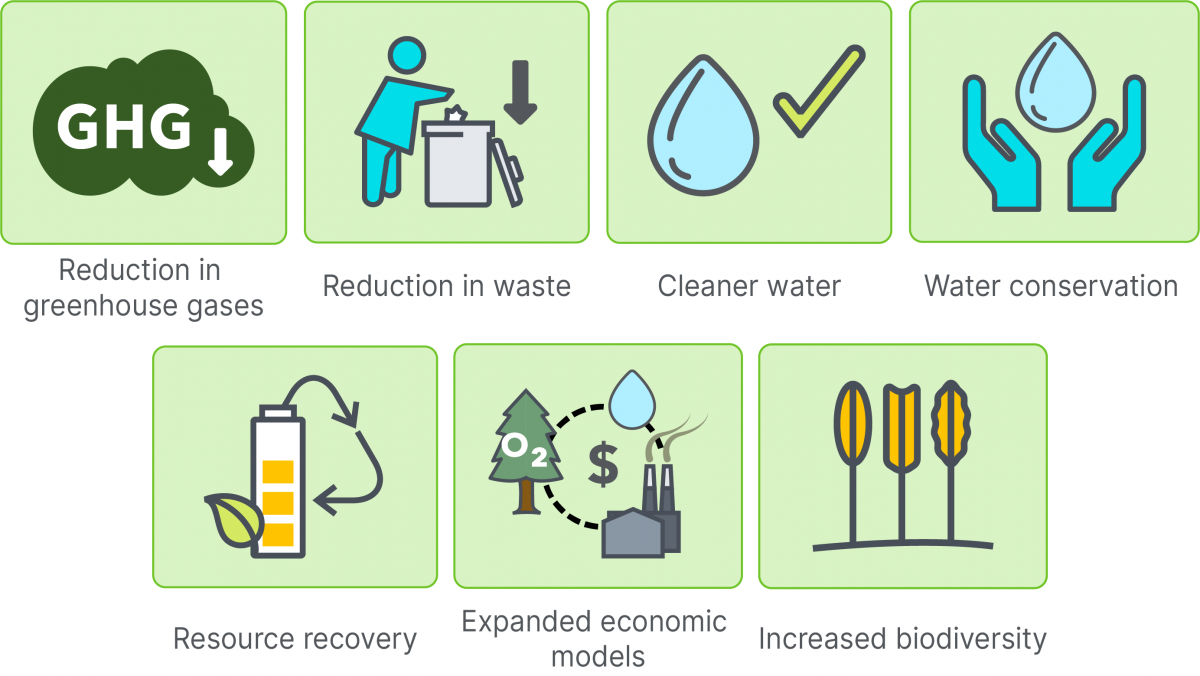Search

The circular economy moves consumption and production beyond the traditional linear model by decoupling economic growth from resource use. Circularity has the ability to improve the value of natural resources, reduce carbon emissions, and eliminate waste.
The circular economy benefits the environment - and by extension, humans and biodiversity - in several ways:
- Lower greenhouse gases
Local initiatives and projects like container refill/reuse, sharing platforms, repair, and place-based resource recovery are essential in a circular economy and help lower greenhouse gases.
- Cleaner Water and Water Conservation
Recent research around the world has pointed to the presence of microplastics in groundwater, surface water, and even drinking water. By diverting plastics from the landfill through sharing, reusing and recycling, fewer plastic goods are exposed to the environment, and fewer microplastics are generated. Protecting water bodies from further pollution and improving water quality will help conserve this important resources for generations to come.
- Lower use of natural resources
By keeping products in use and out of the landfill, we generate less demand for the extraction of new resources from nature. For example, recycling e-waste provides a source for rare earth metals (which are required to make new devices), thereby reducing the need for harmful mining practices.
October is Circular Economy Month. Learn more about the environmental benefits of the circular economy from Canada’s Circular Innovation Council.
Contact Us





